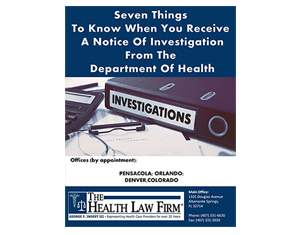In light of the DEA‘s recent focus on Florida’s prescription drug trafficking problem, we wanted to discuss a former case in which the DEA‘s actions resulted in a favorable outcome for alleged drug dealers.
According to the Daily Journal, in 2004, U.S. District Judge Florence-Marie Cooper dismissed charges against three alleged methamphetamine dealers after an attorney to one of the defendants argued that the informant improperly relied on a “subinformant” to set up drug transactions in order for DEA agents to bust suspected dealers. According to the attorney, the informant used the intermediary to protect himself and the DEA from entrapment claims. Because of this, defense attorneys could not derive from the primary witness how the drug sale was arranged.
The attorney claimed that the subinformant contacted old friends and acquaintances in low-income areas and informed them of money to be made if they could find a large amount of methamphetamine for a prospective buyer. The informant posed as the buyer. By repeatedly calling these individuals to find a source for the methamphetamine transactions, the subinformant would turn the case over to the informant right before the transaction took place.
In this case, the DEA provided evidence only of the final interactions between the informant and the defendants. The attorney wanted to show that the entrapment actually occurred earlier, when the subinformant allegedly pressured the defendants to complete the methamphetamine deal.
In laying out the subinformant scheme in his discovery motion, the attorney cited phone records between the subinformant and the defendants in his case and in two other methamphetamine cases, U.S v. Parra, 03-CR- 121, and U.S. v. Corcuera, 03-CR-24. In the three cases, the subinformant had regular and frequent contact with the defendants, but the informant had very little or no contact with the defendants before the arrests.
Cooper agreed that the informant used an underling to keep the defense from analyzing the details of the drug deal. According to Cooper, using an intermediary to do the actual work assigned to the informant, allows the DEA to protect itself from inspection and from any charges of improper conduct.
“A law enforcement agency must not be allowed to shield itself from accountability by hiring someone outside of law enforcement who is free to violate citizens’ rights.” U.S. v. Alvarez, 02-CR-355.
With a subinformant, there is no requirement to monitor their actions. The DEA doesn’t tape, keep records or provide discovery for subinformants. The DEA has a history of failing to regulate its informants, including the nationwide Andrew Chambers scandal. An internal investigation launched by the DEA in 2000 revealed that Chambers repeatedly lied under oath over a 16-year period in which he earned almost $2 million to help bust drug felons.
However, even if informants were regulated it wouldn’t prevent subinformants from negotiating the transactions that entrap individuals.
These investigative measures by the DEA are also being used in operations directed at Florida pain clinics. In an effort to rid the state of pill mills, the DEA is using every tool to bust clinics, physicians and pharmacists that might be involved in a suspicious pain clinic.
For more information about legal matters concerning pain clinics, visit www.TheHealthLawFirm.com.


